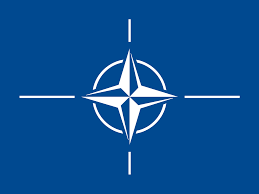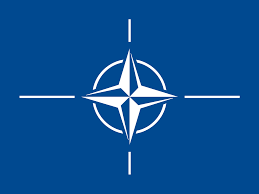The proliferation of low-cost, highly capable Unmanned Aerial Systems (UAS) has fundamentally altered the character of modern warfare. The threat has evolved from single, remotely-piloted drones to coordinated, autonomous swarms capable of overwhelming traditional air defense systems. In response, military planners and defense industries are pivoting from static, point-defense solutions to dynamic, mobile counter-UAS (C-UAS) architectures. This shift represents a critical adaptation to a battlefield where air superiority is no longer guaranteed and threats can emerge from any direction, targeting both fixed installations and forces on the move.
The development of a comprehensive, mobile C-UAS capability is not merely a technological upgrade; it is a strategic necessity. The ability to protect maneuvering ground forces—such as armored columns, logistical convoys, and dismounted infantry—from ubiquitous aerial surveillance and attack is now a core requirement for successful combined arms operations. This analysis examines the context, implications, and future trajectory of mobile C-UAS architectures as a cornerstone of next-generation force protection.
Historical Context: From Fixed Sites to Mobile Defense
The evolution of C-UAS technology has been rapid and reactive, largely driven by battlefield experiences in conflicts such as those in Syria, Nagorno-Karabakh, and Ukraine. Early C-UAS systems were primarily designed to protect high-value, static targets like airbases, command centers, and critical infrastructure. These systems often relied on large, fixed-site radars and dedicated interceptors, which proved effective against a limited number of conventional threats. However, the use of small, commercially available drones by non-state actors and peer adversaries exposed a significant gap in this defensive posture. These small UAS are difficult to detect due to their low radar cross-section and can be deployed in large numbers, saturating defenses.
The conflict in Ukraine, in particular, has served as a crucible for C-UAS development. Both sides have extensively used drones for reconnaissance, artillery spotting, and direct attack, leading to a deadly cat-and-mouse game. The vulnerability of mobile units to loitering munitions and first-person view (FPV) drones highlighted the inadequacy of relying solely on fixed-site air defense. This operational reality has accelerated the demand for integrated C-UAS systems that can be mounted on tactical vehicles, providing a protective bubble for units on the move and enabling them to survive and operate effectively in a drone-saturated environment.
Strategic Implications and Key Components
The strategic shift towards mobile C-UAS architectures carries profound implications for military doctrine and force structure. It integrates air defense directly into the ground maneuver element, blurring the lines between traditional force protection and offensive operations. A successful mobile C-UAS architecture is not a single piece of equipment but a layered, multi-component system-of-systems. This architecture typically includes several key elements: detection, tracking, identification, and neutralization.
Detection relies on a suite of complementary sensors, including compact active electronically scanned array (AESA) radars, electro-optical/infrared (EO/IR) cameras, and radio frequency (RF) detectors that can identify drone control signals. Once a potential threat is detected, advanced tracking algorithms and sensor fusion techniques are employed to maintain a clear picture of the battlespace. Identification is increasingly reliant on artificial intelligence and machine learning to classify the type of UAS and assess its intent, distinguishing between friendly, neutral, and hostile systems. The final layer, neutralization, involves a range of kinetic and non-kinetic effectors. Kinetic options include guided munitions, airburst rounds from autocannons, and even other drones. Non-kinetic solutions, such as high-power microwave (HPM) systems, laser weapons, and sophisticated jamming technologies, offer a scalable and often lower-cost-per-shot alternative for defeating swarms.
Key Actors and Future Scenarios
The development of mobile C-UAS is a highly competitive field involving established defense primes, agile technology startups, and government research agencies. Major contractors like Raytheon, Northrop Grumman, Rheinmetall, and Thales are developing integrated solutions that can be fitted onto a variety of vehicle platforms, from armored personnel carriers to light tactical vehicles. Simultaneously, innovative smaller firms are pioneering disruptive technologies in areas like AI-driven threat recognition and novel interceptors. Government bodies, such as the U.S. Department of Defense’s Joint Counter-Small Unmanned Aircraft Systems Office (JCO), are working to standardize requirements and foster interoperability among different systems.
Looking ahead, several scenarios are likely to shape the future of mobile C-UAS. The primary challenge will be managing the cost-exchange ratio, as adversaries will continue to leverage inexpensive drones to deplete expensive defensive munitions. This will drive further investment in directed energy weapons and other low-cost-per-shot effectors. Another key trend will be the networking of C-UAS assets across the battlefield, creating a distributed and resilient defensive web. Future architectures will be highly autonomous, using AI to shorten the sensor-to-shooter timeline to a speed that humans cannot match, which is essential for countering hypersonic threats and massive, coordinated swarms. The integration of these systems into broader command-and-control networks will be paramount for deconfliction and achieving a unified operational picture.
Conclusion
The paradigm of air defense is undergoing a fundamental transformation in response to the pervasive threat of UAS swarms. The transition from static to mobile C-UAS architectures is an essential adaptation for modern militaries seeking to maintain freedom of maneuver and ensure the survivability of their forces. While significant technological and doctrinal challenges remain, particularly concerning scalability, cost-effectiveness, and integration, the trajectory is clear. The ability to defend against the swarm on the move is no longer a niche capability but a defining feature of a credible and effective 21st-century military force. Continued innovation and investment in this domain will be critical for maintaining a strategic edge in future conflicts.
Source

